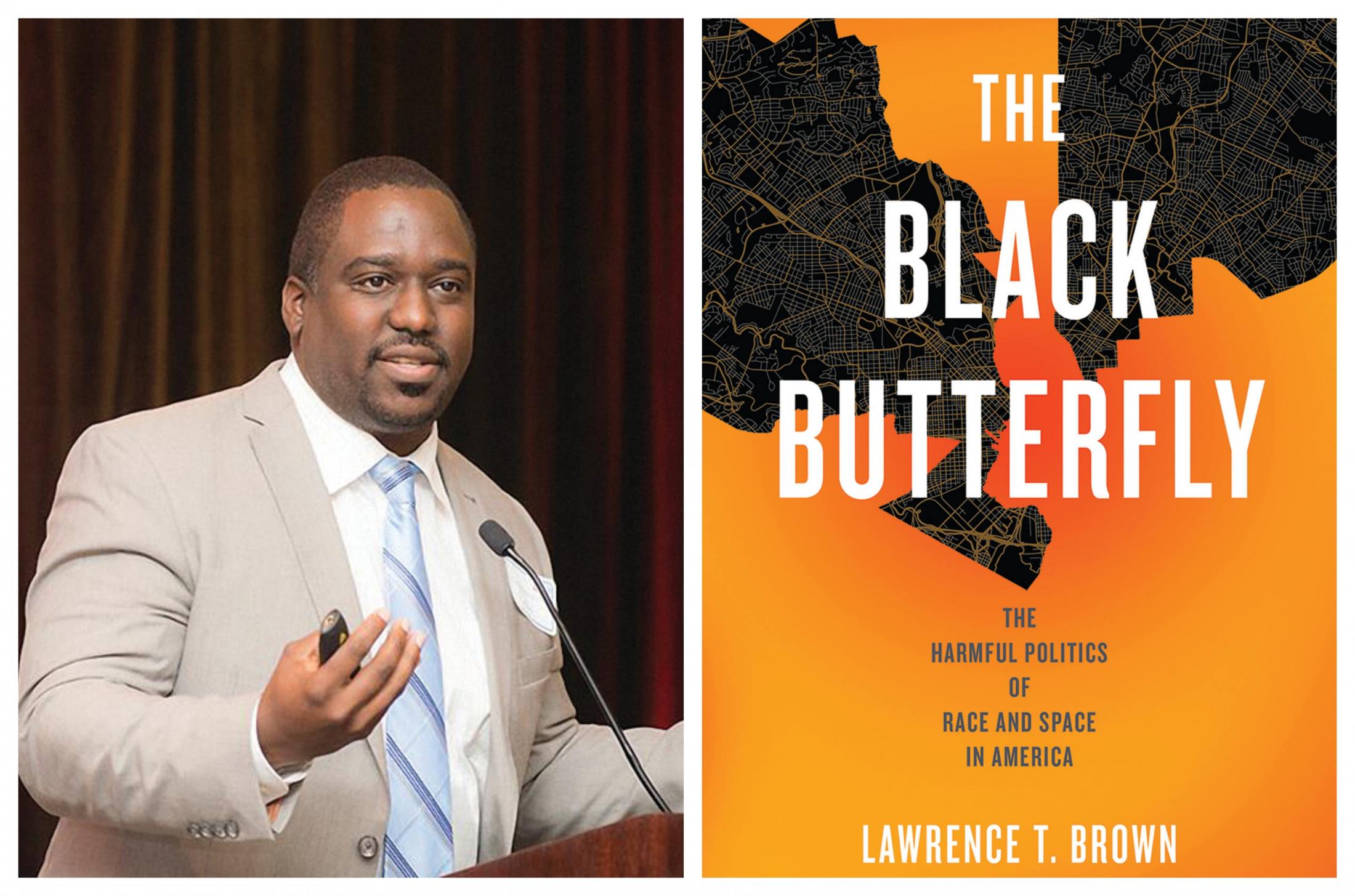News & Community
Lawrence Brown’s New Book Examines Public Health Impacts of Historical Trauma
The book is a must-read for anyone who wants to understand the political and economic forces behind Baltimore’s bifurcated white and Black neighborhoods.

In 2018, as an associate public health professor at Morgan State University, Lawrence Brown was honored with the Open Society Institute-Baltimore’s “Bold Thinker” award for sparking discussion around the city’s racial segregation. The same year, The Root named him to its annual list of the most influential African Americans ages 25 to 45.
After serving as a visiting professor at the University of Wisconsin-Madison, the West Memphis native returns to Morgan this year to launch the school’s Center for Urban Health Equity. Brown’s new role coincides with the release of The Black Butterfly: The Harmful Politics of Race and Space in America. It’s a must-read for anyone who wants to understand the political and economic forces behind Baltimore’s bifurcated white and Black neighborhoods, and the modern-day segregation at the center of so much of the city’s inequity.
In 2015, you coined the term “The Black Butterfly” to describe the geography of East and West Baltimore. How did that term originate?
I had been teaching undergraduates about the segregation of space in the city and was trying to think of ways to get people to understand the concept. It was something the undergraduates—18, 19, 20 years old—could hang their hat on. The Black Butterfly is half a term of art and half of social science. [The street artist] Nether picked up on it and used it in a mural and [painter] Chris Wilson has used it in his work. The research in the book kind of came later, after others had already run with it.
This book is not directly focused on the struggle for voting rights or even of-the-moment concerns about the need for police reform. It’s a story of systemic racism in the built environment—infrastructure, housing, and neighborhoods.
I sum up the book in one sentence—you can’t make Black lives matter if you don’t make Black neighborhoods matter. There is a lot of activism and advocacy around Black lives and police violence. I wanted to expand the scope and say we shouldn’t just care about Black lives when they die at the hands of police, but we should care about all of the factors that lead up to early Black deaths . . . [including] health inequality. For every one of those [violent incidents], there’s 10,000 children, like Freddie Gray and Korryn Gaines, who are poisoned by lead. There’s people who die of asthma, HIV, or now COVID. If we’re saying Black Lives Matter, we have to care about Black neighborhoods, because that’s where Black people live.
In Baltimore, it seems the protests around the Port Covington tax increment financing (TIF) plan signaled a breakthrough moment in terms of how city government and public dollars foster segregation and inequality.
Port Covington was a turning point, in terms of organizing. There were marches and protests around the death of Freddie Gray. Now, there was organizing over a TIF. We had like 800 people come out to City Council work-group meetings at the War Memorial building that summer. It was 2016, the year after the Uprising, and here the city was giving a massive $660-million TIF to this billionaire at the corner of the “White L.” The public awareness [and outcry] was a tremendous step forward.
One of the most enlightening parts of the book is the look back at The Sun’s vociferous support of housing segregation.
The impetus for many white homeowner’s associations was the “Negro Invasion” [a characterization in the Baltimore Sun]. That was the rhetoric that was weaponized.